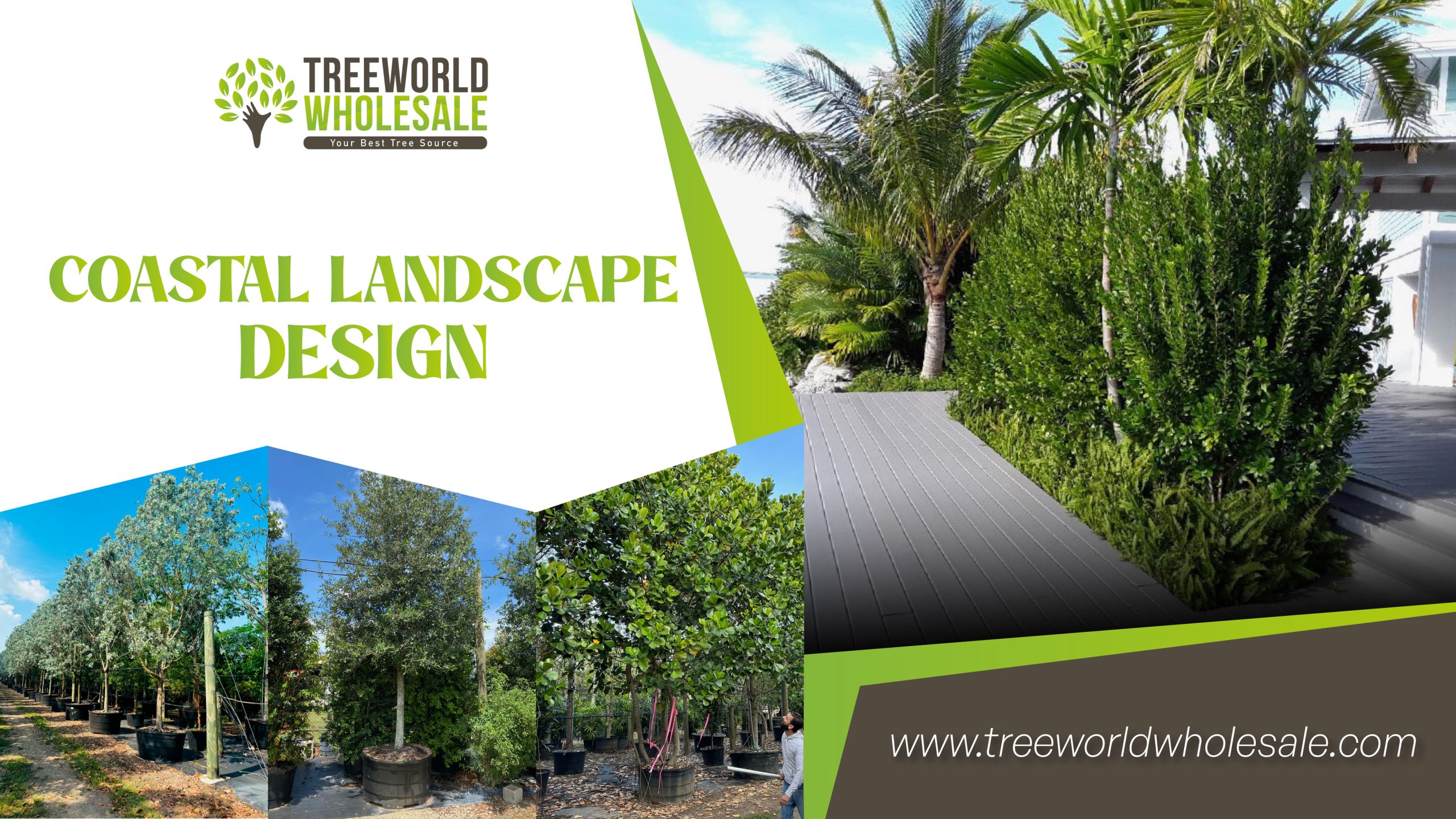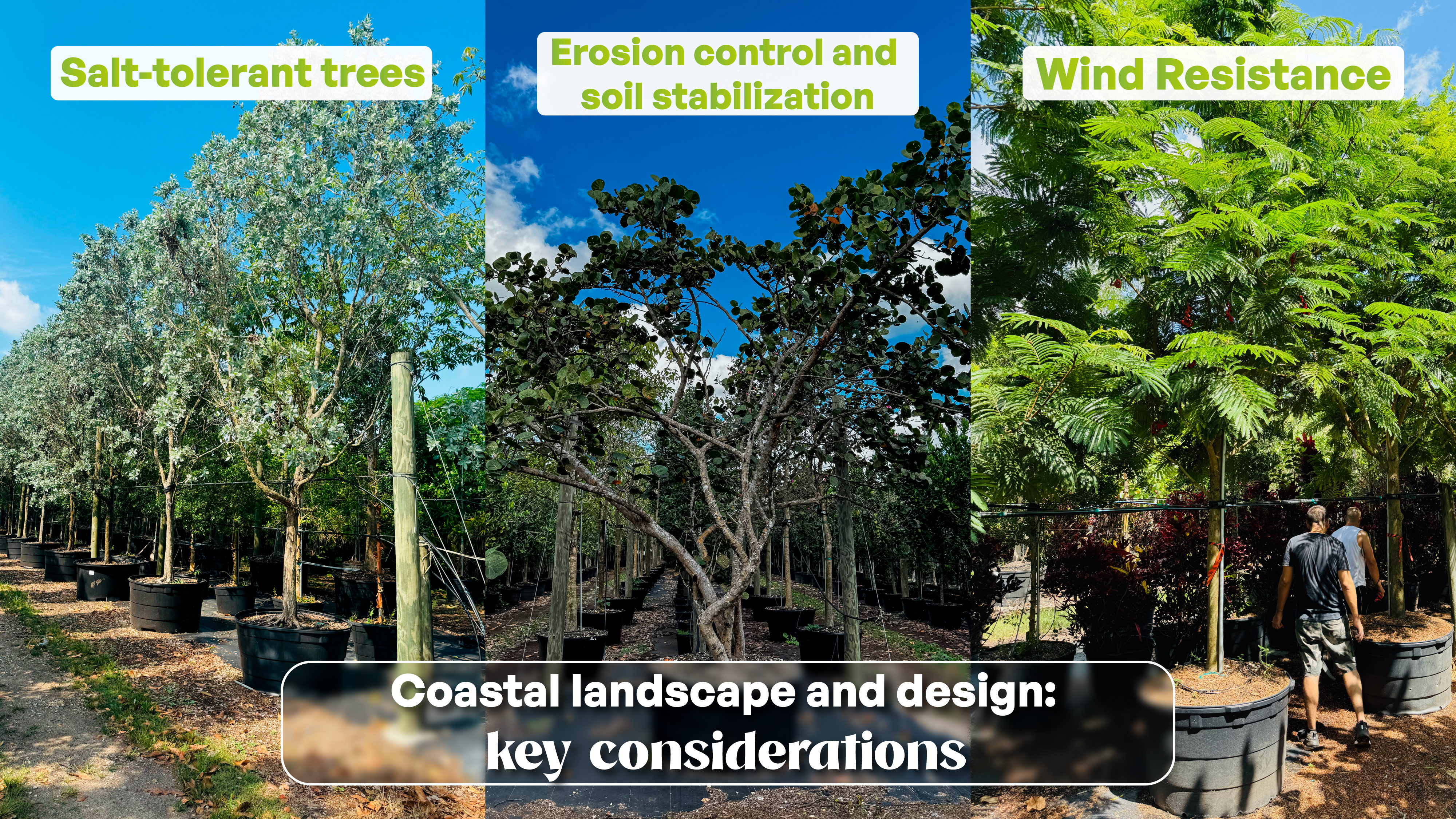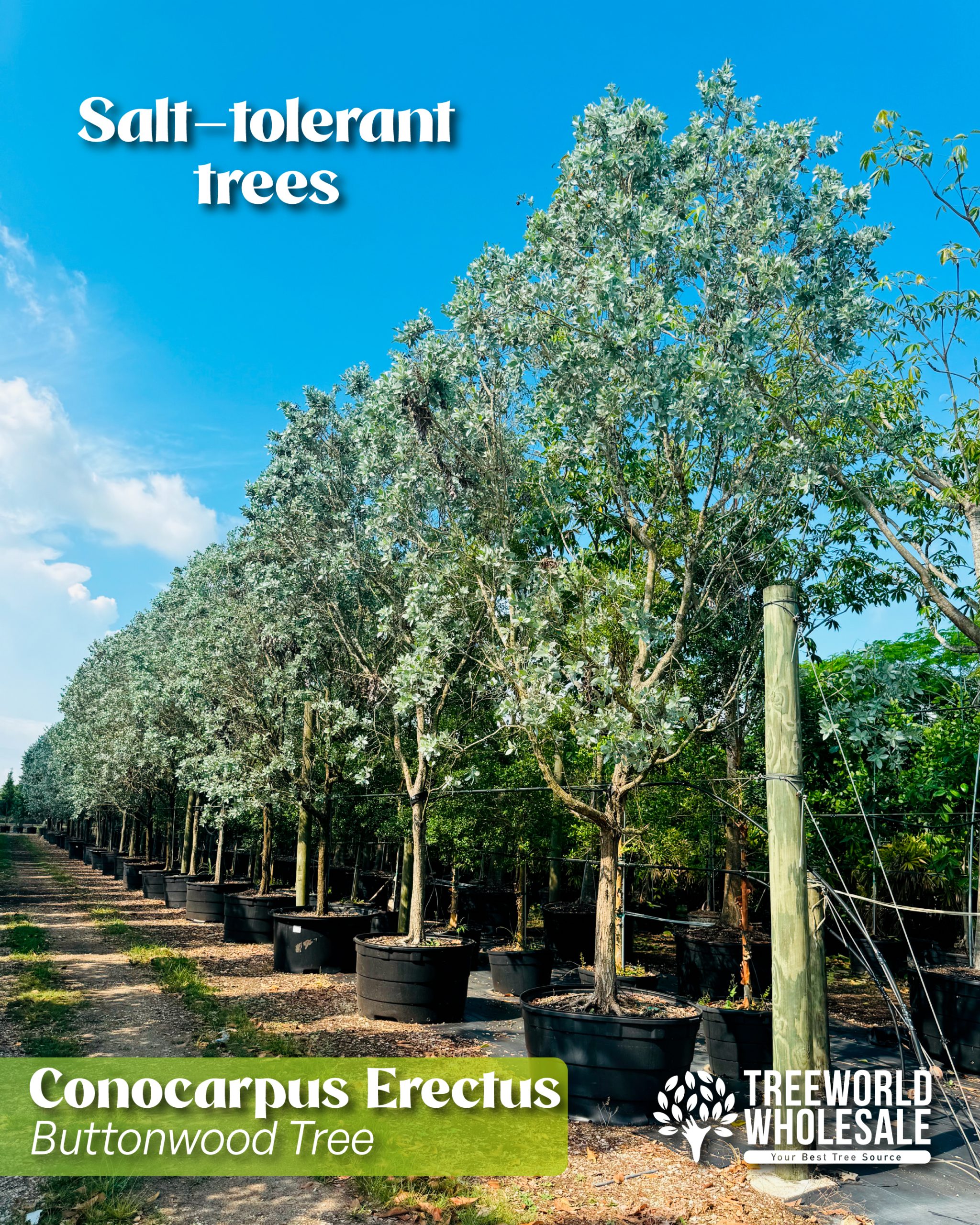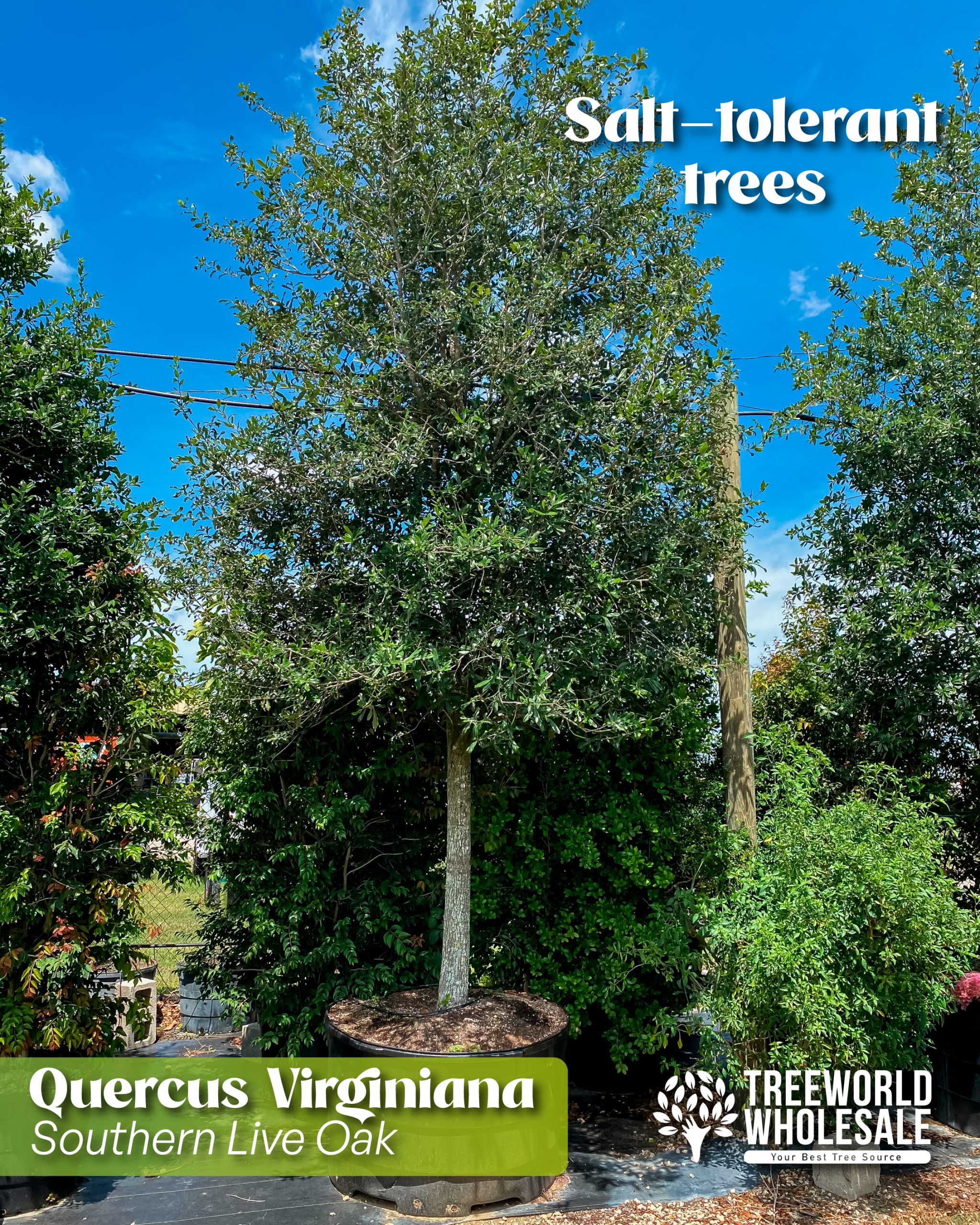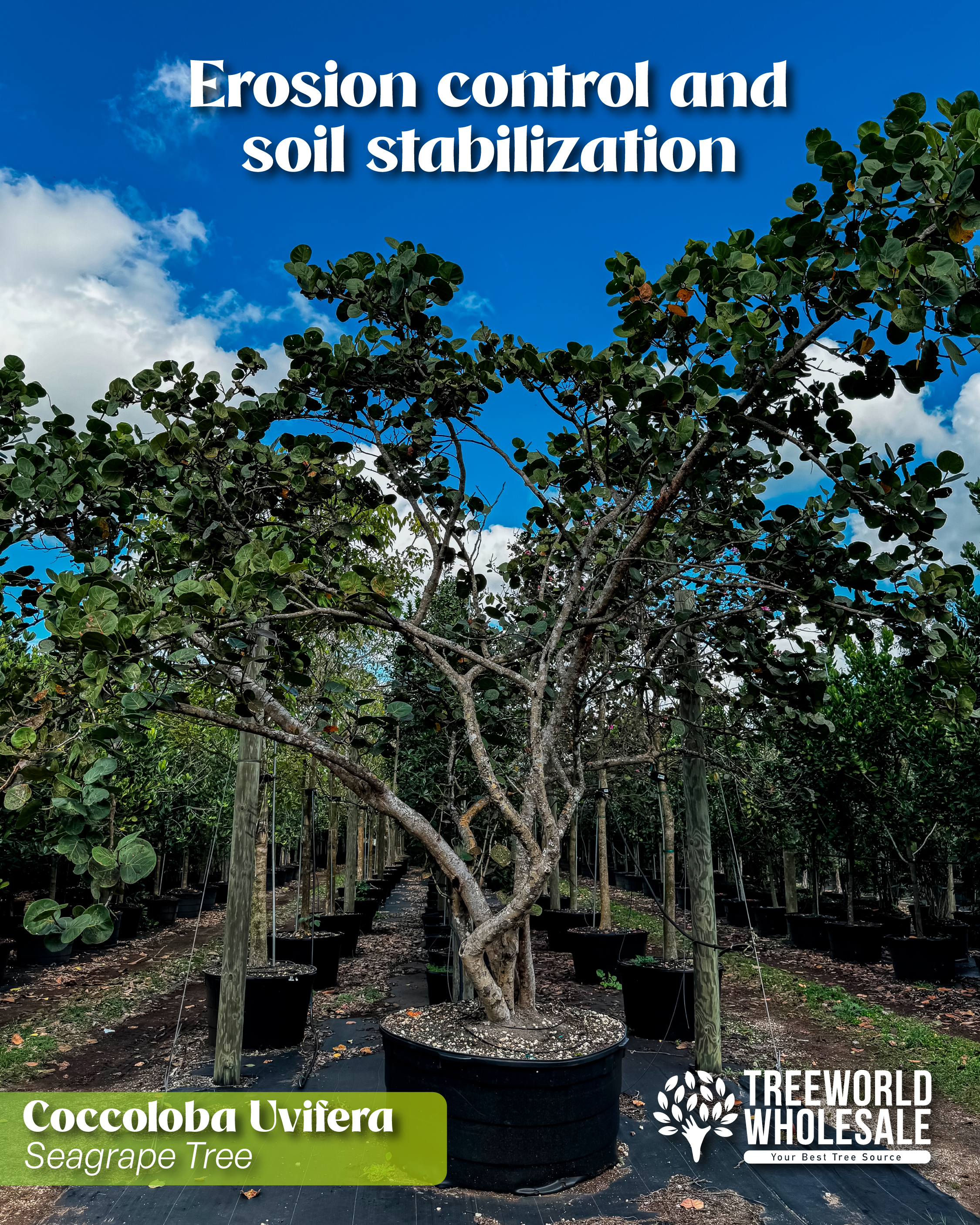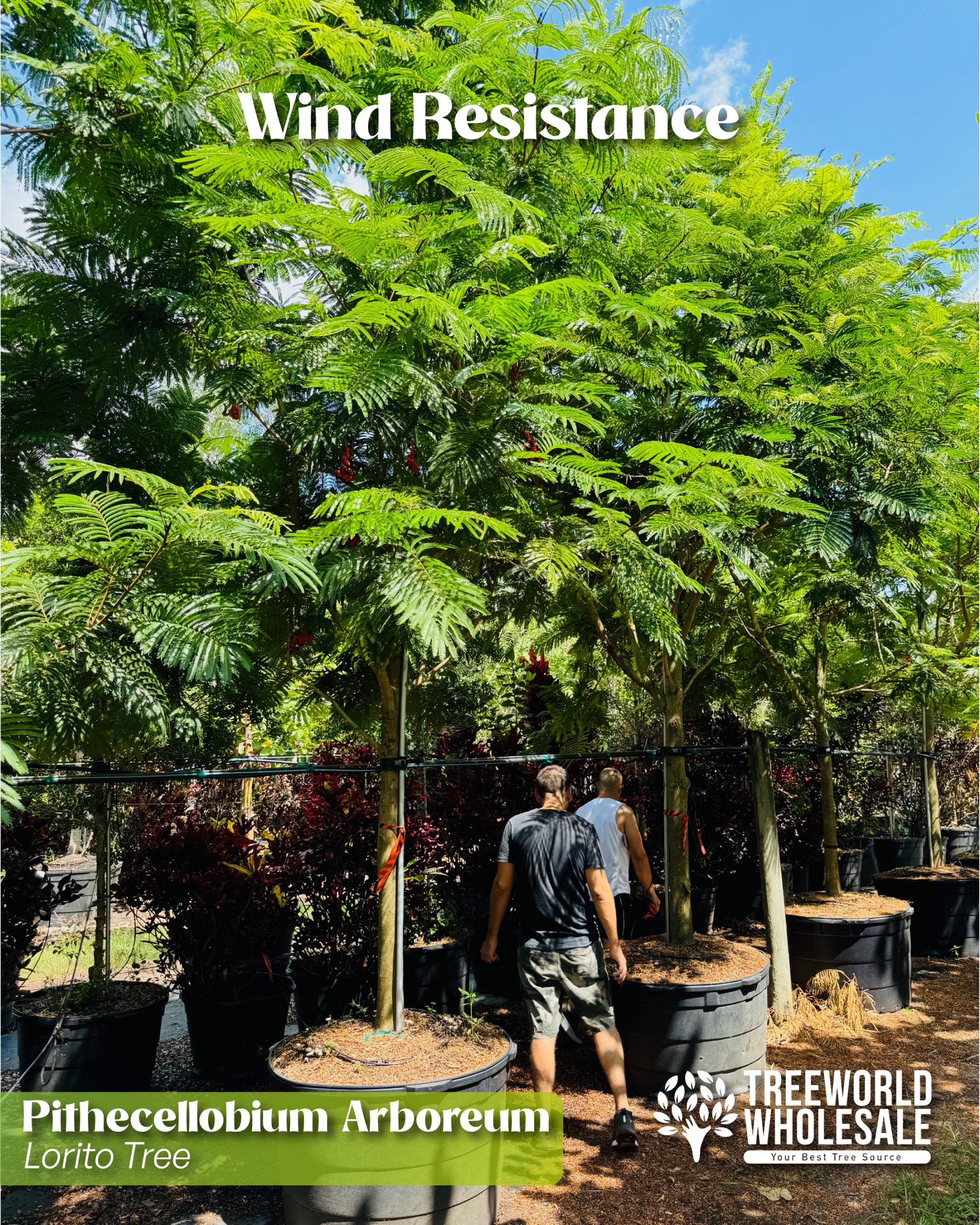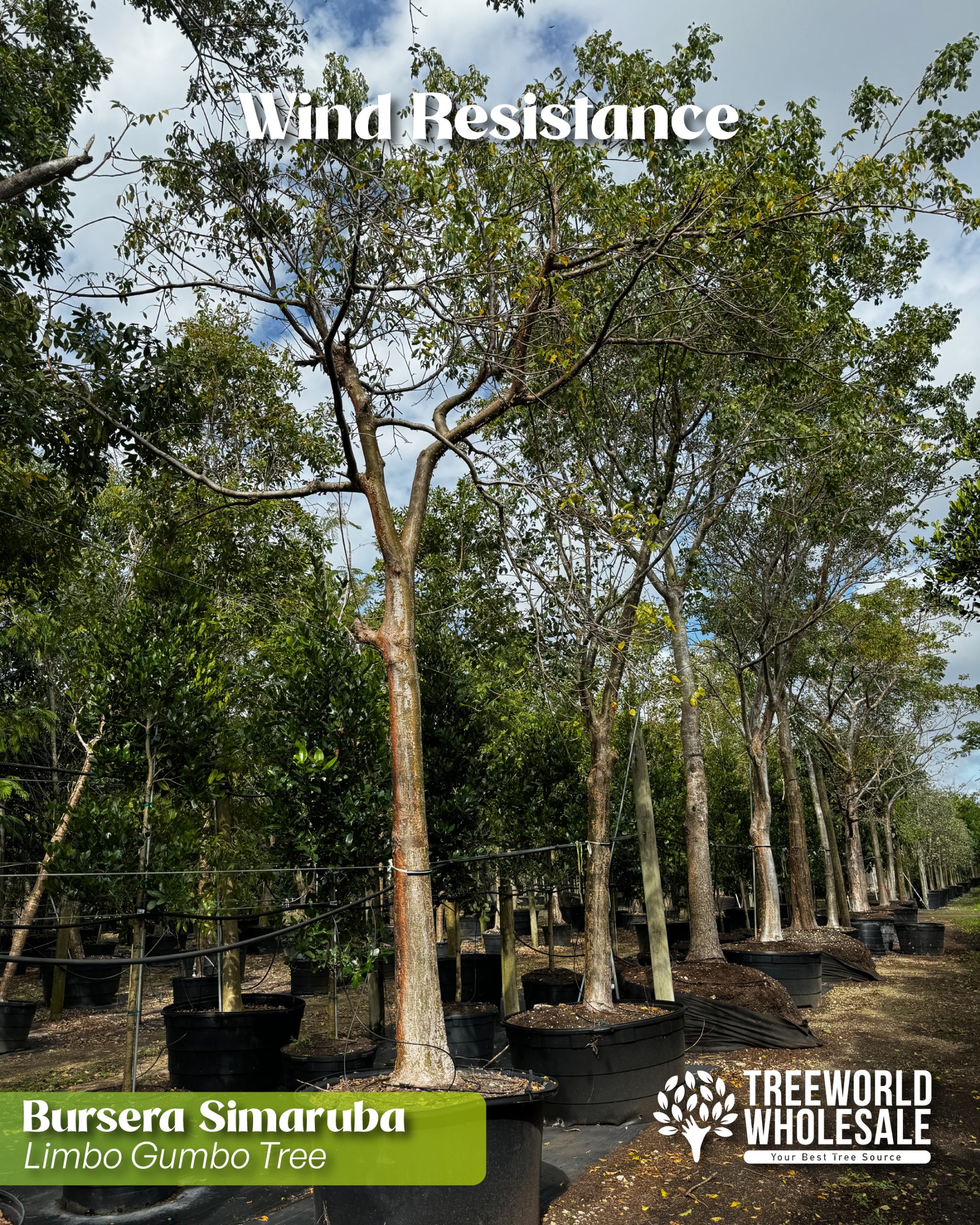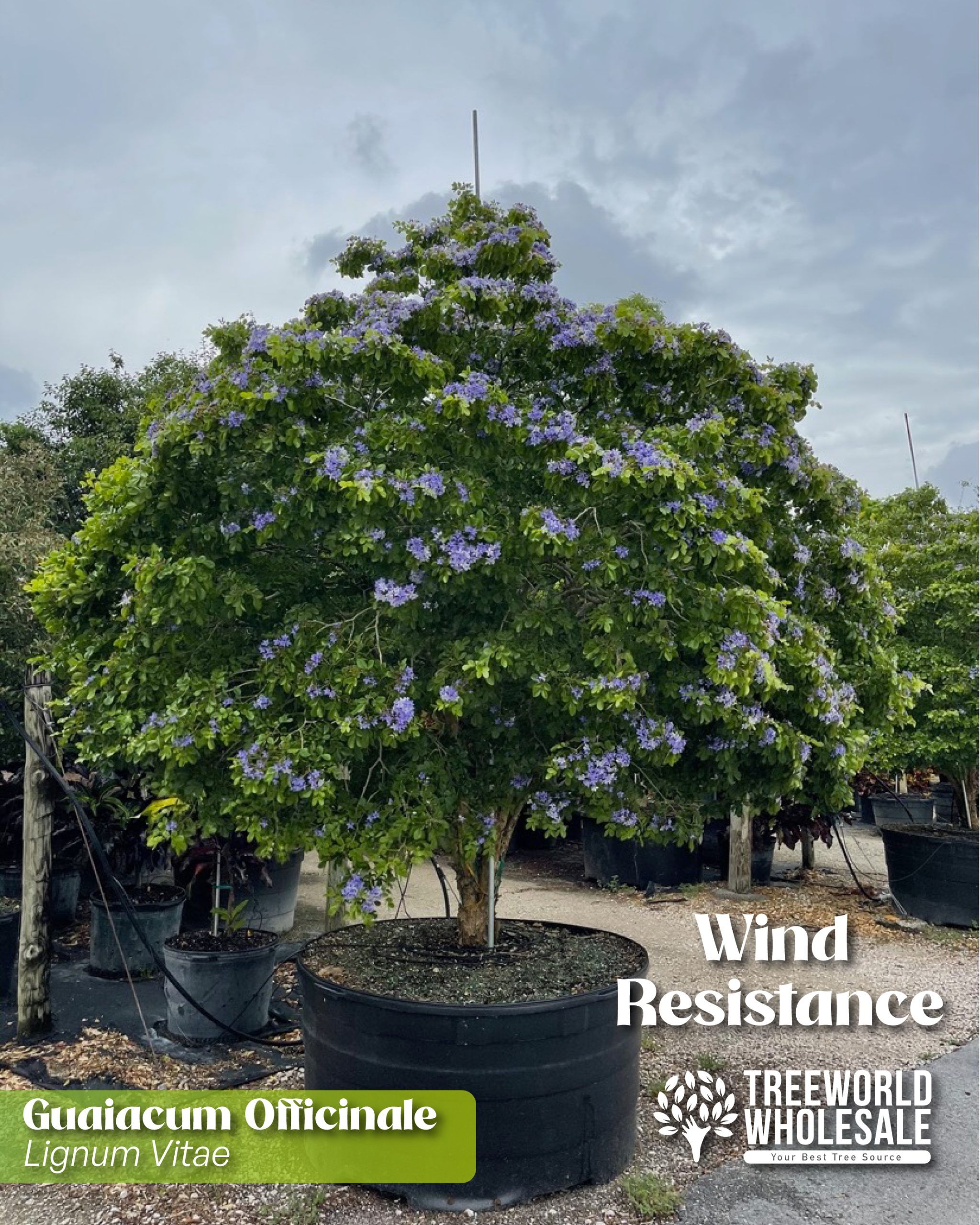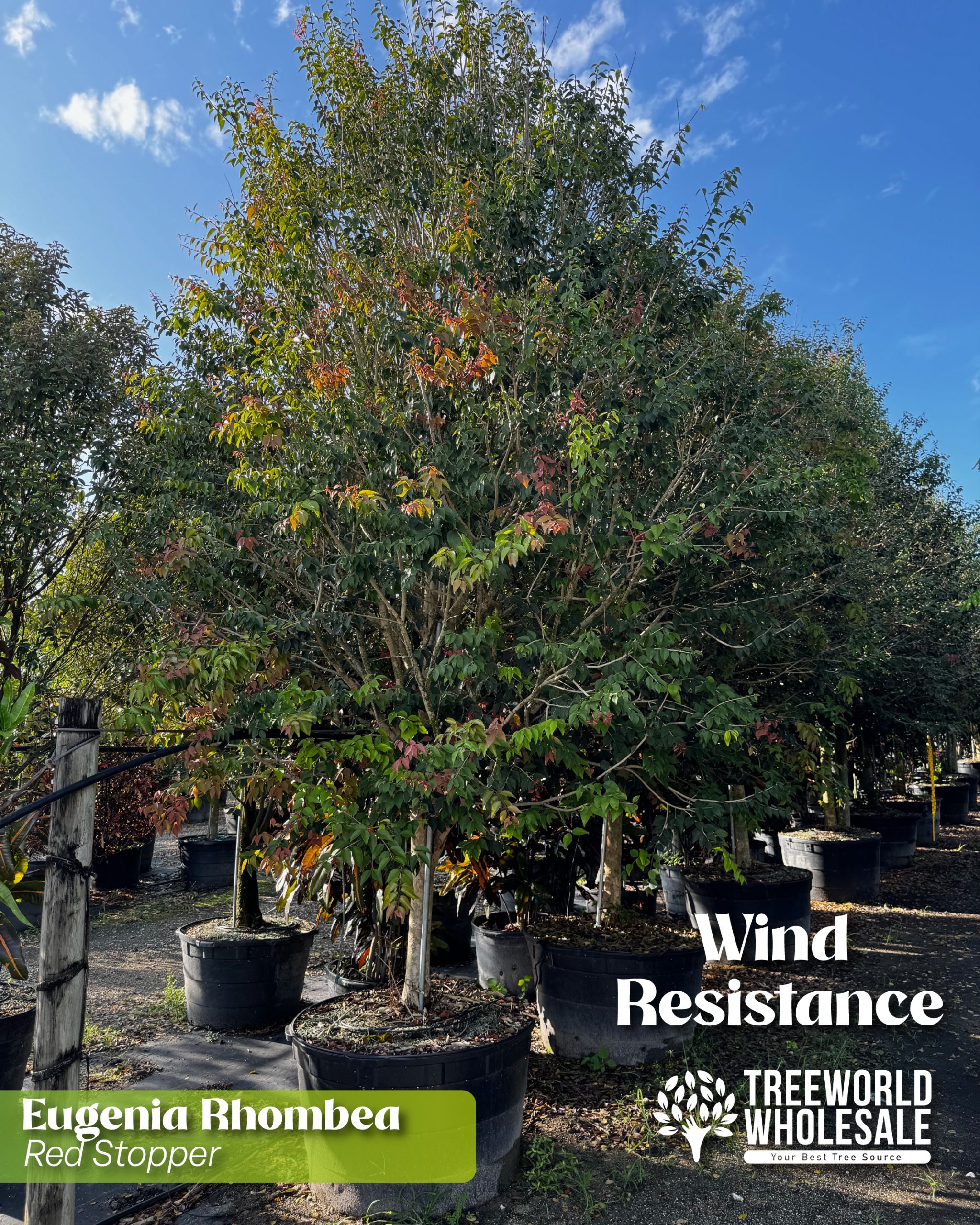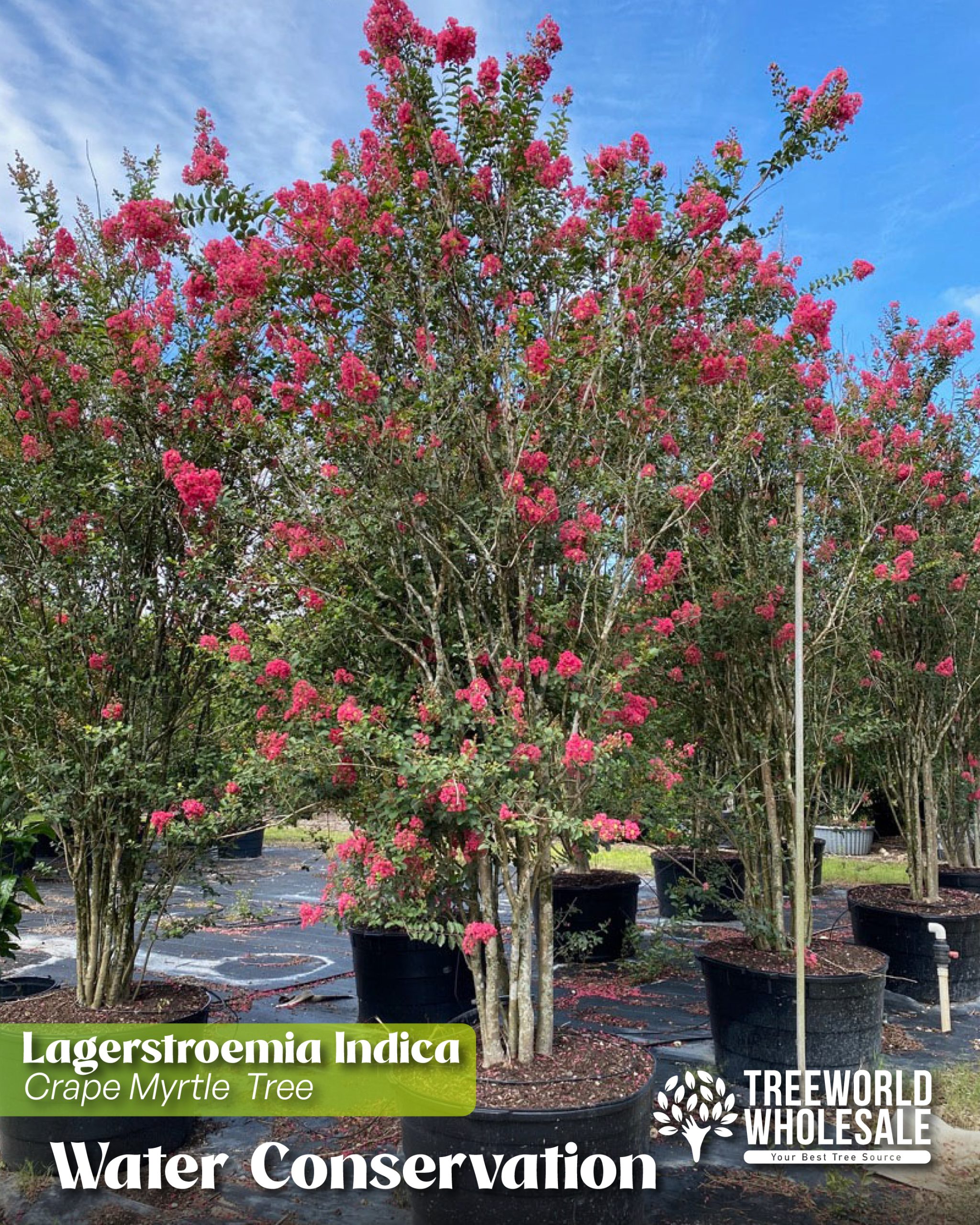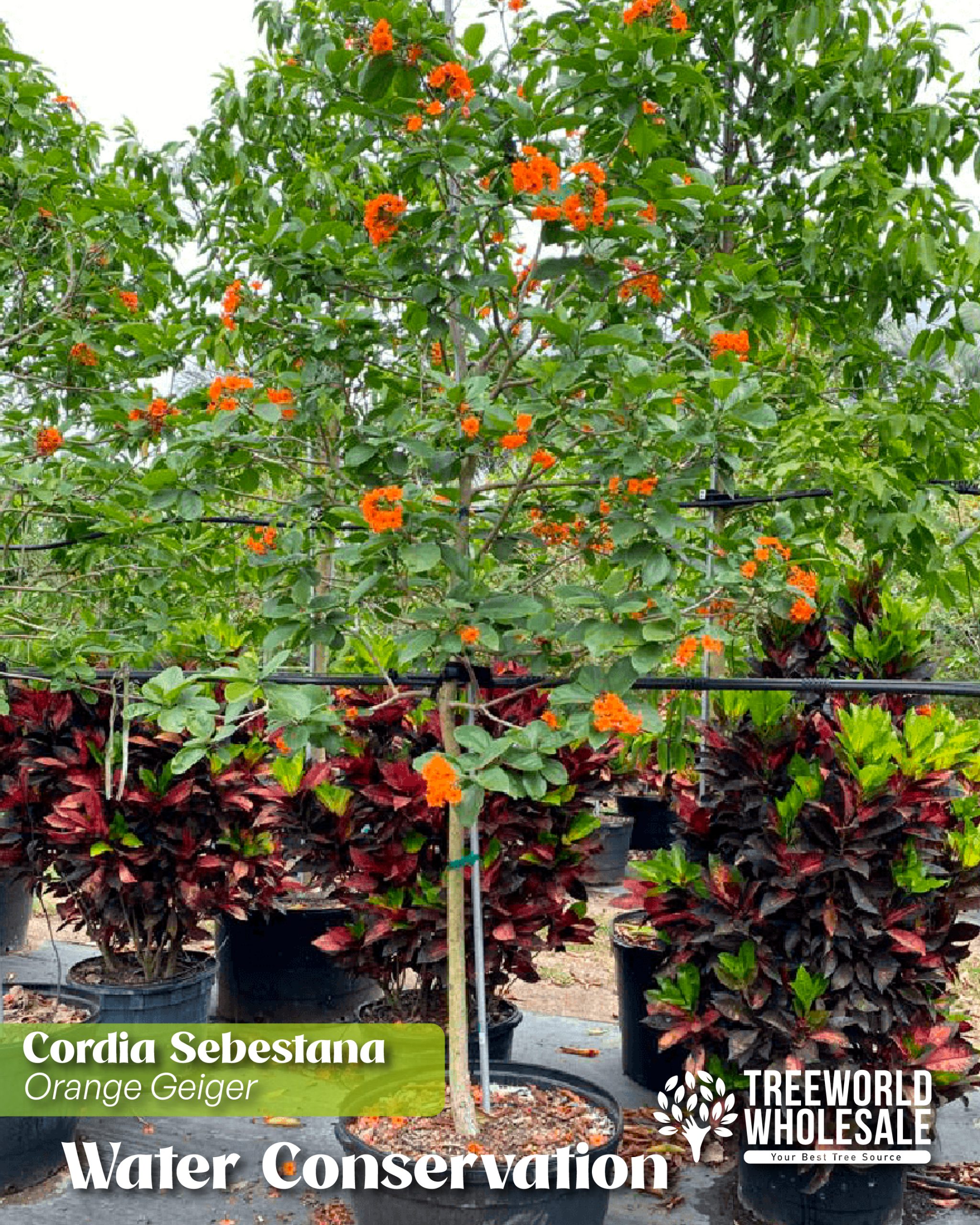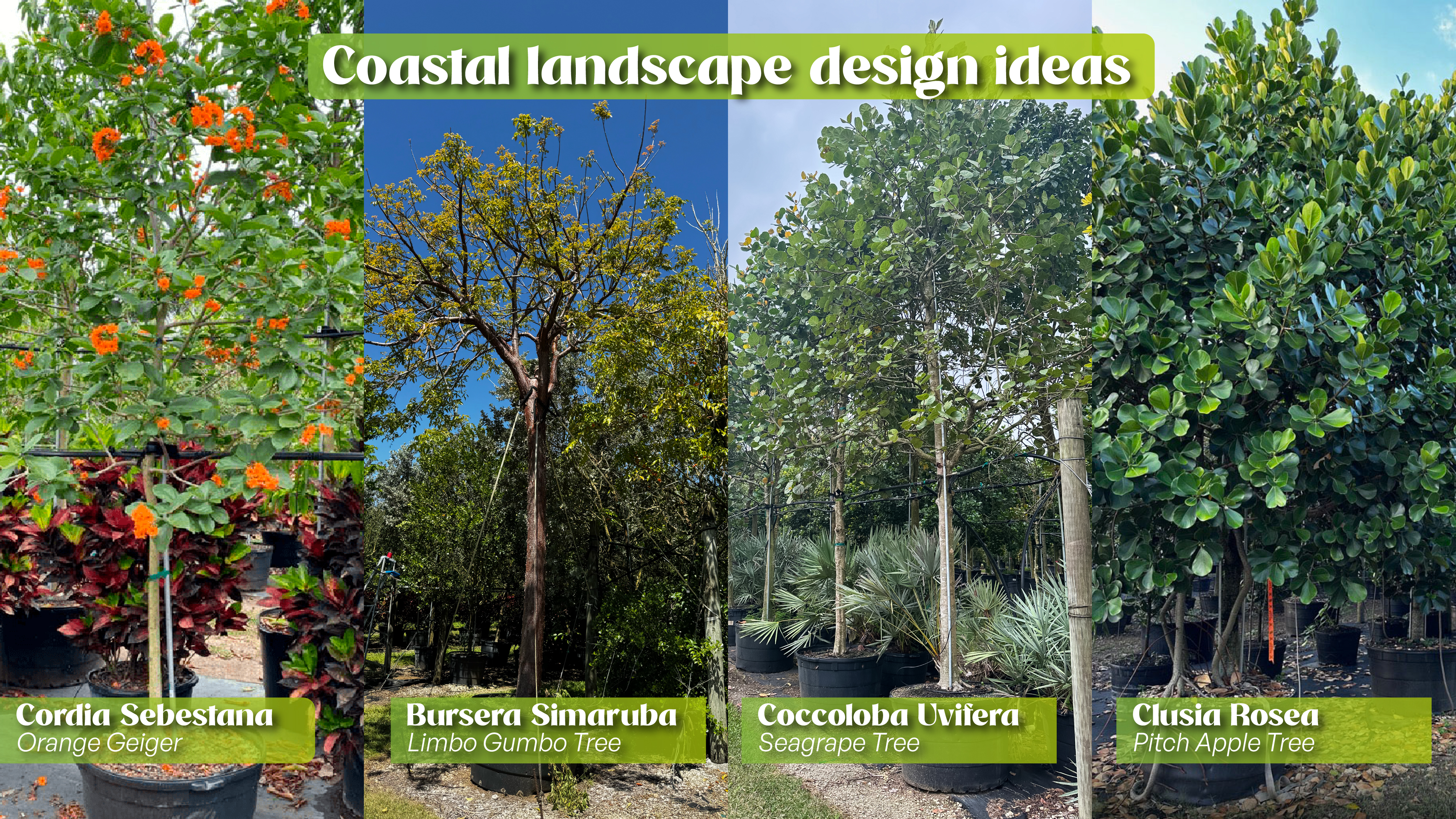Coastal landscape design is nothing new in Florida; it is a fundamental aspect of landscape architecture. When it comes to this practice, there is a lot to invest in and consider in order to guarantee not only a beautiful one, but a sustainable and resilient one as well.
Because the coastal region is naturally challenging due to its susceptibility to various weather conditions, including heavy winds, hurricanes, and tropical storms, it also experiences significant exposure to salt, drought, and, naturally, heat stress. Plus, coastal areas are susceptible to erosion from both wind and water, which can lead to soil loss and destabilization of the landscape. However, as is often the case in nature, when faced with challenges, trees provide both the solution and the opportunity to thrive in this environment. This includes implementing natural windbreaks, strategically placing plants, considering water conservation techniques, and using native plants to reduce erosion.
Coastal landscape and design: key considerations
Salt-tolerant trees
When you have both coastal landscape and design together in a project, there are some key considerations to keep in mind. Selecting salt-tolerant trees is critical. It's important to keep in mind that these trees will encounter harsh conditions. So, trees like the native Conocarpus erectus, commonly known as buttonwood, are a versatile and resilient choice. Especially in Florida and the Caribbean. Their two primary varieties, the Green Buttonwood and the Silver Buttonwood (Conocarpus erectus var. sericeus), are well suited to coastal conditions; they are both highly salt-tolerant and thrive in poor soil conditions. Both are aesthetically pleasing, as the silver buttonwood's distinctive foliage provides a striking contrast in the landscape, while the green buttonwood offers lush greenery. They serve as excellent options for privacy hedges and windbreaks.
Another salt-tolerant option, the Southern Live Oak (Quercus virginiana), thrives in sandy, saline soils and is commonly found along the southeastern coast of the United States. Moreover, the native Clusia rosea (Pitcha apple) and the kamani tree (Calpohyllum inophyllum) are the most salt-tolerant options. For more information and additional options, please visit our tree section.
Erosion control and soil stabilization
Furthermore, coastal regions are prone to erosion due to wind, water, and storm surges. So, implementing measures to control erosion, such as including native trees and an extensive root system, will help control erosion and soil stabilization. Roots act as anchors, stabilizing the soil and decreasing the probability of erosion due to water runoff or wind. Considering that coastal soils have poor fertility and drainage, you need to be very clever about your choices when it comes to coastal design and landscape.
For instance, the native Coccoloba uvifera, best known as the sea grape, is a wonderful choice. It is quite effective at managing erosion. Its extensive root system aids in binding the soil together, significantly reducing the risk of erosion due to water runoff or wind pressure. Heavy rains or high tides can't wash it away.
Wind resistance
Being on the shore, an area prone to severe winds, tropical storms, and hurricanes, calls for some wind-resistant trees to protect the landscape. But exactly what makes a sturdy, wind-resistant tree?
It starts off with a strong and extensive root system that anchors the tree and provides stability during high winds. For instance, the Pithecellobium arboreum, also known as the Lorito tree, has an extensive root system and a flexible and aerodynamic nature. Not only providing a strong foundation, but the flexibility of the branches allows them to sway with the wind rather than snap under pressure. Not to mention, the branches evenly distribute the wind's force, reducing their chances of breaking.
Another excellent wind-resistant example is the native Bursera simaruba, best known as the gumbo limbo tree. This Florida native is considered a medium-to-large tree (20'–60'' feet high) that is tolerant of salt spray and saline conditions. Its flexible branches provide resilience against strong winds, while its extensive root system helps with erosion. Not to mention the striking, exfoliating bark and foliage that will add interest to your landscape design. If you are interested in more options regarding wind-resistant trees, please visit our portfolio or text us with your requirements.
Another two excellent wind-resistant options are the Guaicum Offcinale, best known as the "tree of life," and our native Eugenia Rhombea, the red stopper.
Water conservation
Moreover, incorporating water-efficient practices into every landscape design is crucial for achieving sustainable coastal landscaping. Therefore, in addition to establishing hydrozones, which involve grouping trees with similar water requirements together, it is important to ensure efficient irrigation and minimize water waste. Also, developing an effective irrigation strategy is crucial. It is important to make a thoughtful tree selection.
Choose high-drought-tolerant trees that will require less water, like Cordia sebestena (Orange Geiger Tree). It is an excellent choice for coastal landscape design due to its combination of attractive appearance, drought tolerance, and resilience. Once established, it is known to be highly drought-tolerant, requiring minimal watering. An ideal choice for water-efficient landscapes. Additionally, it is well-suited to areas with irregular rainfall and can thrive in sandy, well-drained soils, such as coastal regions. Another top choice is the Jerusalem thorn or Palo verde tree (Parkinsonia aculeata), famous for its green bark and bright yellow flower, iconic in desert landscapes, and the Crape Myrtles (Lagerstroemia indica), also known for their drought resistance.
Native trees Sustainable coastal landscaping
Finally, because of their minimal maintenance needs, ecological advantages, and capacity to adapt to local conditions, native trees are essential to sustainable coastal landscaping. Adding native plants to coastal areas increases biodiversity, benefits nearby wildlife, and strengthens the environment's resistance to extreme weather and climate change.
Coastal landscape design ideas
While the coastal landscape presents numerous requirements, it also offers a wide range of options. Additionally, trees complement each other. For example, the brightly blooming orange geiger (Cordia sebestena) contrasts beautifully with the peeling bark of the gumbo limbo (Bursera simaruba) or the striking foliage of the sea grape (Coccoloba uvifera). The kamani tree (Calophyllum inophyllum) makes for excellent shade and windbreak, as does the pitch apple (Clusia rosea). There is an option for almost every application that is required in your coastal landscape design idea! Contact us via text or by phone at (305) 968-2427 so we can brainstorm together about what tree best suits your coastal landscape design.

